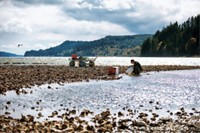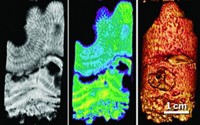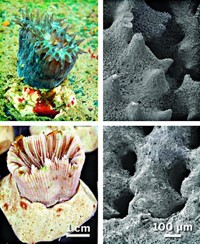Advertisement
Grab your lab coat. Let's get started
Welcome!
Welcome!
Create an account below to get 6 C&EN articles per month, receive newsletters and more - all free.
It seems this is your first time logging in online. Please enter the following information to continue.
As an ACS member you automatically get access to this site. All we need is few more details to create your reading experience.
Not you? Sign in with a different account.
Not you? Sign in with a different account.
ERROR 1
ERROR 1
ERROR 2
ERROR 2
ERROR 2
ERROR 2
ERROR 2
Password and Confirm password must match.
If you have an ACS member number, please enter it here so we can link this account to your membership. (optional)
ERROR 2
ACS values your privacy. By submitting your information, you are gaining access to C&EN and subscribing to our weekly newsletter. We use the information you provide to make your reading experience better, and we will never sell your data to third party members.
Environment
Calcium carbonate availability may shape deep sea ecosystems
Seafloor organisms divide into distinct regional communities of animals with different body types
by Ariana Remmel
July 28, 2023
| A version of this story appeared in
Volume 101, Issue 25

A chemical boundary in the deep sea may have helped shape abyssal ecosystem composition based on body type. The discovery has implications for how these communities could be affected by climate change and deep-sea mining.
The abyssal zone of the ocean includes depths between about 3,000 m and 6,000 m. The seafloor at those depths covers more than 60% of Earth’s surface. Barely any organic matter filters down to these frigid depths, which limits the nutrient availability for animals living beyond the reach of light. Yet deep-sea ecologists have observed myriad marine organisms scattered throughout the abyss.
Because these organisms are so widely dispersed across this vast expanse, scientists struggle to understand how abyssal sea creatures form regional communities, says Erik Simon-Lledó, an ecologist with the UK’s National Oceanography Center.
To investigate, Simon-Lledó and his colleagues compiled an atlas of more than 50,000 megafaunal specimens observed at depths between 3,800 m and 5,300 m in the Clarion-Clipperton Zone, an abyssal plain in the Pacific Ocean. Next, the team mapped out the geographic locations that each type of organism in their atlas had been observed. “As soon as we plotted it, it was like, ‘Whoa! Everything separated into two areas,’” Simon-Lledó says.
The researchers found that animals with carbonate-based tissues, such as soft corals, brittle stars, and shelled mollusks, were most prevalent in regions ranging from 3,800 m to 4,300 m. Yet these organisms were almost completely absent below 4,800 m where anemones and sea cucumbers were prevalent. The area between these shallow and deep abyss communities comprised a mix of both. This transition zone coincides with the carbonate compensation depth (CCD), a chemical boundary in the deep sea where calcium carbonate becomes undersaturated (Nat. Ecol. Evol. 2023, DOI: 10.1038/s41559-023-02122-9).
Simon-Lledó is careful to note that this work does not prove the CCD is responsible for separating these communities, “but at the very least it shows that the match is perfect.”
And despite the turnover in dominant species, both communities maintain high biodiversity. “You reach the same levels of diversity, but you reach them by means of different species,” says Simon-Lledó.
It’s difficult for corals and shelled animals to grow hard tissues below the CCD, so it makes sense that the availability of calcium carbonate could play a big role in shaping whole ecosystems in environments that straddle the divide, says Travis Washburn, a benthic ecologist at the Washington Department of Fish and Wildlife.
The CCD is projected to rise as the climate changes, which will likely challenge these seafloor ecosystems. And because the abyssal seafloor is a target for deep-sea mining, Washburn and Simon-Lledó both worry for the resilience of these sensitive organisms as they face rapid environmental disruptions.





Join the conversation
Contact the reporter
Submit a Letter to the Editor for publication
Engage with us on Twitter